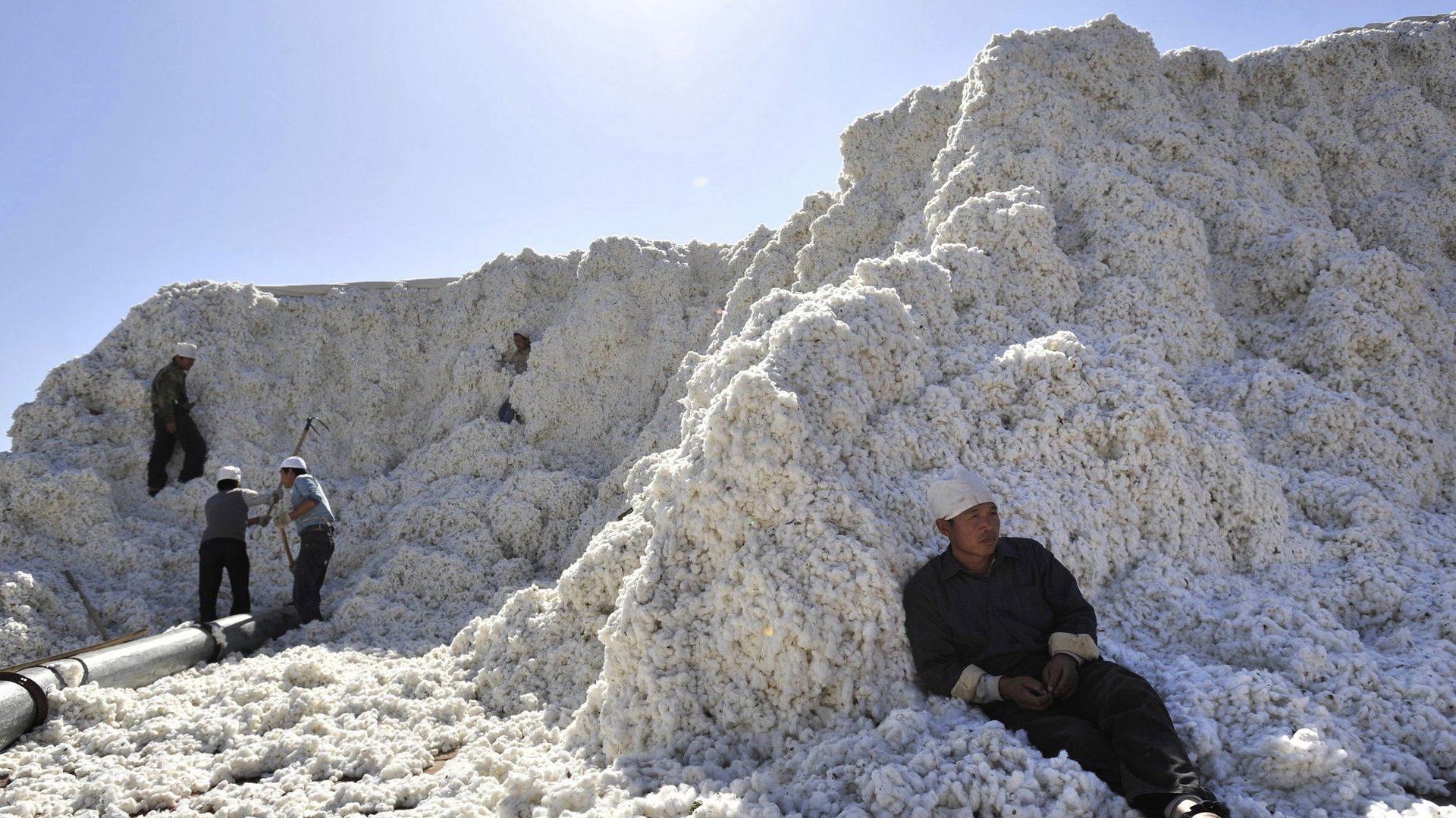Why has the world stockpiled enough cotton for 127 billion t-shirts?
At the end of 2015, world cotton stocks are “extraordinarily high,” says the USDA, estimating that nearly 50 billion pounds of cotton (around 104 million 480-pound bales) will be sitting in global stockpiles by the middle of 2016 (pdf). That’s enough to make about 127 billion t-shirts—or 17 for every single person on the planet—according to the National Cotton Council’s conversion estimates.


At the end of 2015, world cotton stocks are “extraordinarily high,” says the USDA, estimating that nearly 50 billion pounds of cotton (around 104 million 480-pound bales) will be sitting in global stockpiles by the middle of 2016 (pdf). That’s enough to make about 127 billion t-shirts—or 17 for every single person on the planet—according to the National Cotton Council’s conversion estimates.
It seems unlikely we could possibly need that many t-shirts—or sheets, towels, jeans, or any cotton item, really—in the next 12 months. According to the USDA, global cotton stocks currently represent about 94% of world cotton consumption, which is more than double the average ratio that prevailed in the three decades between 1980 and 2010.
“It’s an enormous amount of cotton that’s been stored,” Stephen MacDonald, a senior economist at the USDA, told Quartz. The last time we saw storage-consumption ratios like this, MacDonald said, was at the end of World War II, when the US government had provided strong incentives for cotton farmers, and peacetime textile production had yet to pick up.
So what gives?
Largely, China. Between 2011 and 2013, China implemented a stockpiling program, purchasing the fiber if prices fell below a set floor.
Why would China, or anyone else for that matter, want to hold on to that much cotton? There are a few possibilities.
In China’s case, the program was a price support for farmers. It not only guaranteed China’s cotton farmers a minimum price for their crop, it also created an artificially tight supply, which contributed to a rise in global cotton prices.
China has since abandoned that program, but much of the stockpile remains. By 2014, China was sitting on nearly 60% of the world’s cotton stockpile, according to numbers from the International Cotton Advisory Council.
In other instances, stockholders may sit on cotton, waiting to sell at a higher price. But that’s an expensive and risky game. Storage costs money, and beyond that, although cotton may not be as perishable as say, corn, it does become less desirable over time.
“It’s not good for cotton to sit there that long,” said McDonald.
And, of course, the supply can simply outweigh the demand, leading cotton to sit in warehouses, unsold.
For that, we can thank a growing penchant for synthetic fibers, such as polyester, nylon, and spandex—all essential components to the shift toward athleisure apparel and, increasingly, the fabrics of our lives.